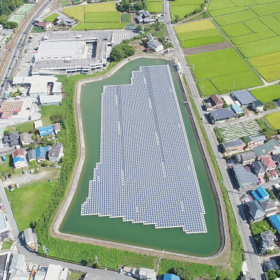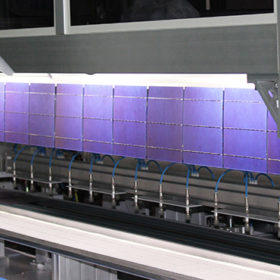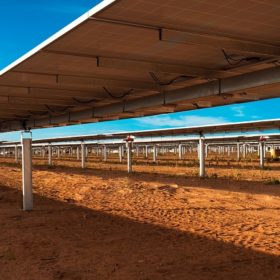The weekend read: On track for quality improvement
China continues to grow in importance as a key source of components for solar trackers produced by the world’s leading tracker companies, in part since improvements in Chinese quality control have advanced significantly over the last few years.
GCL-Poly creates JV to build new 20 GW mono ingot fab in China
The Chinese solar energy firm announces details of joint venture with the Qujing Municipal Government in China to build a 20 GW monocrystalline ingot facility in Qujing.
DuPont and Envision join forces to develop new degradation analytics for solar modules
Solar materials producer DuPont Photovoltaics Solutions to cooperate with Internet of Things pioneer in big energy data Envision to develop effective degradation analysis for solar modules.
The weekend read: Floating on optimism
The past year has been an exciting period for proponents of floating solar. A range of new projects and pilots have been announced across the globe over the past 12 to 14 months, with IHS Markit’s Solar Deal Tracker now listing floating PV installations in 24 countries throughout the world, all in varying stages of development.
The 9th ITRPV: Module price pressure to continue as production capacity tops 130 GWp, price learning curve rises to 22.8%
Annual International Roadmap for Photovoltaics, compiled by the German production equipment industrial association (VDMA), reveals slowdown in module price reduction for 2017 in contrast to significant market increase that saw module production capacity rise above 130 GW.
Interview: The time has come for a European solar industry policy
In an interview with pv magazine, SolarPower Europe CEO, James Watson explains how the Clean Energy Industrial Forum (CEIF) set up by the EU is paving the way for a resurgence of the European solar industry. Representatives from politics and industry met last Friday in Brussels to discuss how to further proceed.
Roth: US steel, aluminum tariffs to add at least 1-3c per watt to solar projects
While President Trump has a range of options, all likely scenarios seem likely to result in a modest increase in the cost of solar installations.
Solar trackers: Record 2017 shipments; up to 20 GW expected in 2018
Last year saw record levels of global solar tracker shipments, reports GTM Research. It forecasts even bigger growth in 2018, despite continued consolidation. NEXTracker held on to the top spot once again, while Latin America became the biggest market.
The weekend read: Tracker market is adapting to bifacial module technology
Solar tracker makers are bringing specially designed models to the market in order to embrace the coming wave of bifacial panels. While bifacial panels may capture up to 10% more light than monofacial panels, single-axis trackers typically add 25% to that bifacial gain, resulting in a roughly estimated 12.5% gain from the two technologies combined, compared with fixed installs using monofacial panels.
Indian government makes surprising u-turn on electric vehicle policy
Minister for road transport, Nitin Gadkari drops plans to introduce national policy to support growth of electric vehicles in surprising reversal on earlier ambitions.







